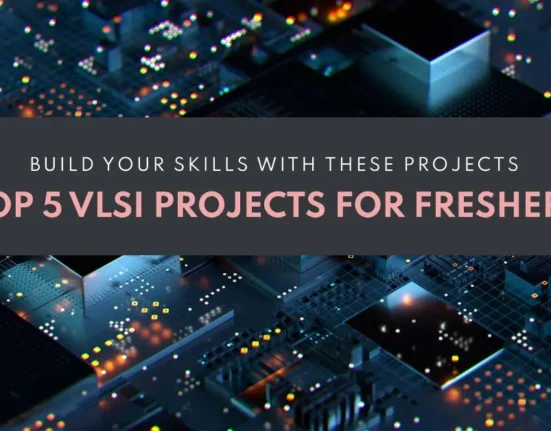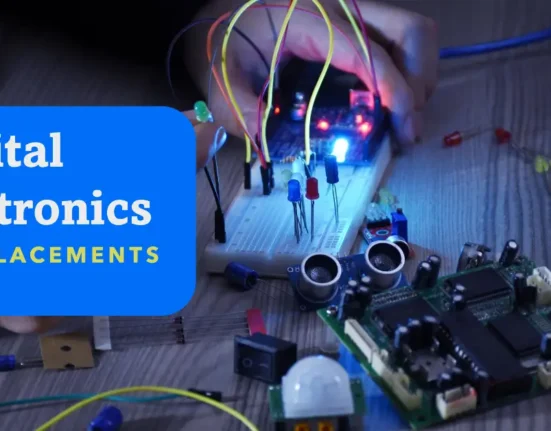VLSI (Very Large Scale Integration) is a complex and rapidly evolving field that combines digital electronics and integrated circuit design. As a fresher in VLSI, it’s crucial to gain hands-on experience through practical projects to develop the necessary skills and knowledge. So ,in this article we have comprised the top 5 VLSI projects that are ideal for freshers to help them kickstart their learning journey.
Table of Contents
Toggle5 Best VLSI Projects for Freshers to Build Skills.
1. Digital Clock Design Using Verilog/VHDL
Designing a digital clock using hardware description languages like Verilog or VHDL is one of the classic VLSI projects for freshers and is at top in our list of Best VLSI Projects for Freshers . While making This project you will get yourself involved in creating a circuit that displays the current time on a seven-segment display or LCD screen. After doing this project you will have a good understanding of the basics of digital circuit design, timing analysis, and simulation.
2. ALU (Arithmetic Logic Unit) Design
The Arithmetic Logic Unit or ALU is a fundamental component of a computer’s central processing unit (CPU). Designing an ALU using VLSI tools is an excellent project for VLSI freshers. While doing this project you will learn about combinational and sequential logic circuits, as well as the implementation of various arithmetic and logical operations. Adding this project in your resume will show the recruiter that you have a good understanding of combinational and sequential logic circuits.
3. FIFO (First-In, First-Out) Memory Buffer.
In computing and in systems theory, first in, first out or, FIFO, is a method for organizing the manipulation of a data structure (often, specifically a data buffer) where the oldest (first) entry, or “head” of the queue, is processed first.
Such processing is analogous to servicing people in a queue area on a first-come, first-served (FCFS) basis, i.e. in the same sequence in which they arrive at the queue’s tail.
FIFO (First-In, First-Out) memory buffers are widely used in data communication, signal processing, and various other applications. Designing a FIFO buffer using VLSI tools will help you understand memory management, synchronization, and timing issues, which are essential skills for VLSI engineers.
4. RISC (Reduced Instruction Set Computer) Processor Design
In Computer System there are mainly two types of instruction set ,first being RISC i.e Reduced Instruction Set Architecture and secondly CISC i.e Complex Instruction Set Architecture. As the name of both suggests In RISC architecture lesser numbers of instructions are required for same work while In CISC more number of instructions are required for same work .Both have their advantages and disadvantages. For more details on them you can click here.
Designing a simple RISC (Reduced Instruction Set Computer) processor is a challenging but rewarding project for VLSI freshers. This project involves understanding the basic architecture of a processor, instruction set design, and implementing various components like the ALU, register file, and control unit.
Major differences between Analog IC design and Digital IC design.
5. Image Processing Algorithms Implementation.
Conclusion.
These projects offer hands-on experience in VLSI design, simulation, and implementation, while also developing essential skills such as problem-solving, critical thinking, and project management. By completing these projects, VLSI freshers can enhance their portfolios and demonstrate their abilities to potential employers in the VLSI industry.




